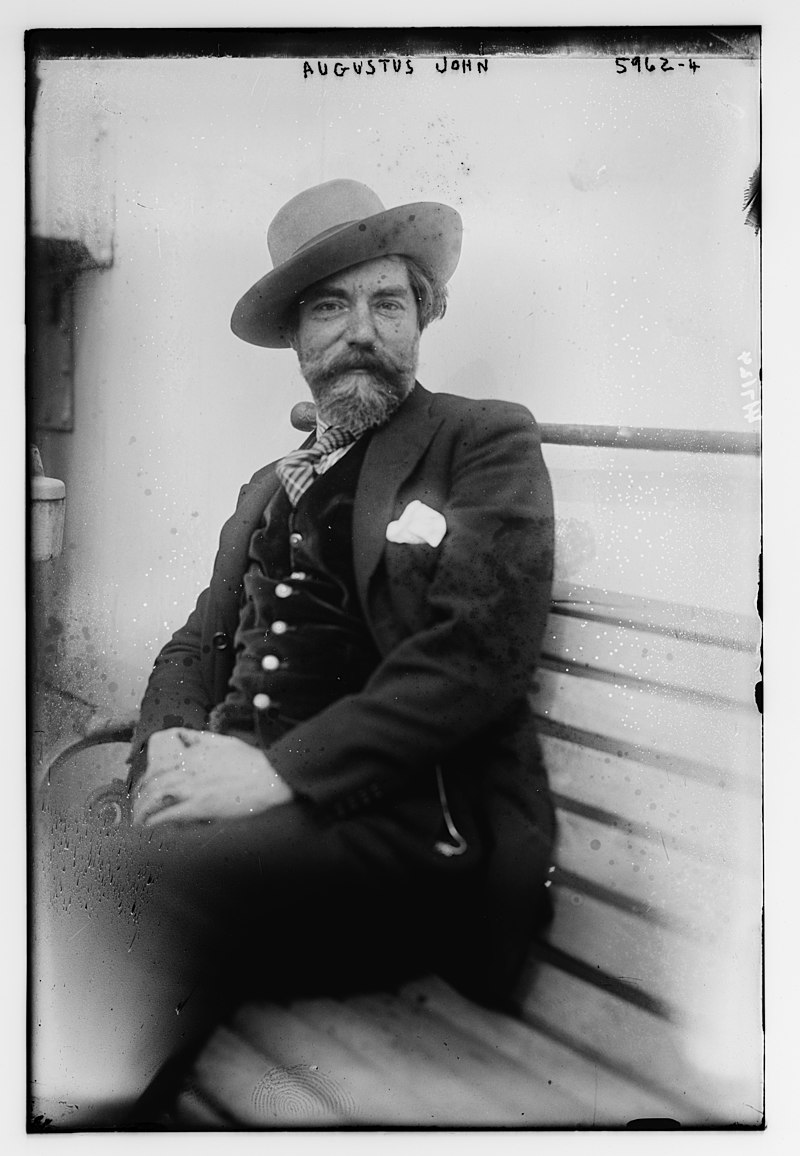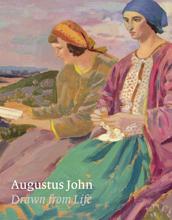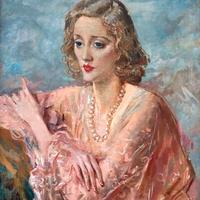More about Augustus John
- All
- Info
- Shop
Works by Augustus John

Contributor
After studying Hals and Rembrandt with his sister, Gwen, at the Slade School of art, the Welsh painter Augustus Edwin John drew inspiration from Gauguin and Picasso, whose influence he absorbed in Paris.
His work somewhat resembles early Picasso, but the real resemblance is in John's personal life, which was full of infidelity and polygamy, or, as your grandparents might call it, "bohemianism." That's not to say that all bohemians eschew monogamy, but there was something about the unrestricted flow of artistic ideas which seemed to attract the unrestricted flow of intimate relationships. Virginia Woolf called it the "age of Augustus John," an age in which both John and Woolf's sister were shacking up with spouses and extramarital paramours.
Two major events early in John's life, the loss of his mother when he was six, and a serious head injury, made him more "eccentric," focused on his art, and unrestrained. Although he was a big-time family man, at one point traveling in a Romani caravan with his first wife, their children, another woman―a former model of his named Dorothy McNeill―and his children by McNeill, he had his share of brawls, like the one that got him in trouble serving as a military artist in WWI, and the time he got drunk and knocked down his friend Dylan Thomas because they both had feelings for the same woman.
One of the strangest and most wonderful John stories is about his commission for the soap kingpin Lord Leverhulme, whose name is now part of the Unilever brand. Leverhulme asked for a three-quarter portrait, because John was one of the best portraitists of his era, and John gave him what he asked for, in true Freudian fashion. The finished product and ensuing dramatic tale, available on the Liverpool Museum's website, shows Leverhulme as a man who achieved every material sign of success but is sadder and more insecure than before he became a Captain of Industry. He looks lumpy, ungainly, and depressed. Initially, Leverhulme wanted to put the painting in his safe where nobody could see it. However, since the whole thing didn't fit in the safe, he removed the offending bit, the face, and stuffed the remaining canvas into storage. His housekeeper found the mangled painting and mailed it back to John. Angry, John wrote to Leverhulme. The embarrassed nobleman couldn't admit that he didn't like the way he looked. John had the story published in the Daily Express, and exhibited his faceless painting with the title Lord Leverhulme's Watchchain. In 1954, they did plastic surgery to restore the painting and it has lived happily ever after.
As John famously suggested later in life, his sister was a much better painter than he was, as a survey of their work will show, but that's probably because he was too busy trying to make babies with most of the women he met, and brawling with the fellas. As you do.
Sources
- "About the Artwork." National Museums Liverpool, https://www.liverpoolmuseums.org.uk/picture-of-month/displaypicture.asp….
- Birch, Jo. Port Sunlight and its People. Stroud, UK: Amberley Publishing Limited, 2018.
- Holroyd, Michael, and Rebecca John. The Good Bohemian: The Letters of Ida John. London: Bloomsbury, 2017.
- Jenkins, David Fraser, and Chris Stephens. Gwen John and Augustus John. London: Tate, 2004.
- Lloyd-Morgan, Ceridwen. Gwen John: Letters and Notebooks. New York: Harry N. Abrams, 2005.
- Mercier, Anita. Guilhermina Suggia: Cellist. London: Routledge, 2017.
- Wintle, Justine. Makers of Modern Culture. London: Psychology Press, 2001.
Featured Content
Here is what Wikipedia says about Augustus John
Augustus Edwin John OM RA (4 January 1878 – 31 October 1961) was a Welsh painter, draughtsman, and etcher. For a time he was considered the most important artist at work in Britain: Virginia Woolf remarked that by 1908 the era of John Singer Sargent and Charles Wellington Furse "... was over. The age of Augustus John was dawning." In the second volume of BLAST, Percy Wyndham Lewis wrote, referring to John, that the ten years up to 1914 had been "the Augustan decade." He was the younger brother of the painter Gwen John.
Check out the full Wikipedia article about Augustus John












